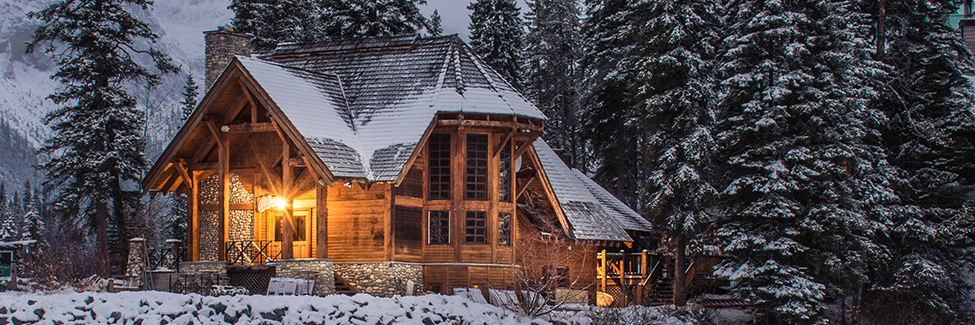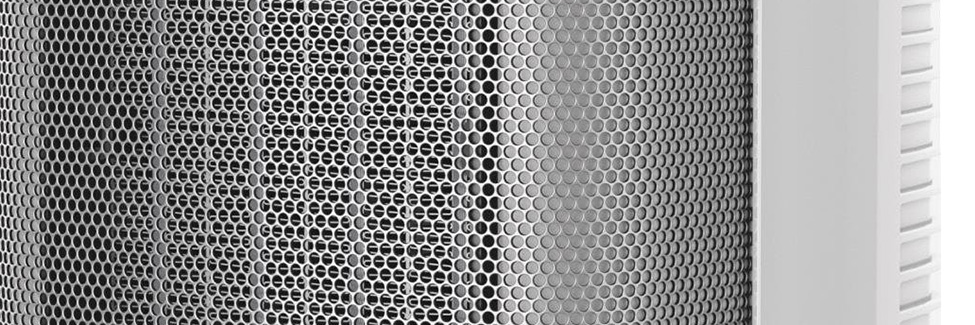
9 Simple Ways to Keep Rooms Warm in Winter
Even in areas known for sunny and warm weather, winter temperatures can reach frigid levels. Are you prepared?
It’s important to keep your home and office comfortable when it’s cold outside. The following strategies will not only help you beat the cold but also save money.
1. Look Out For Cold Drafts
Whenever cold air is allowed to enter from the outside, you’re losing heat. This is a common problem for older houses, where air passes through the space around doors and windows or attic and crawlspaces. To deal with drafts and to keep your rooms warm, first consider their source.
Start with a visual inspection, looking around the area for any visible cracks or openings. If you’re not sure whether or not a room has a draft, try a “smoke” test by closing windows, turning off appliances, and using an incense stick to see whether the smoke travels unnaturally. Alternatively, professionals can administer tests with specialized equipment, like blower door tests.
Fix drafts by adding weatherstripping to openings or caulking and cracks. If you’re in a pinch, place a towel or blanket beneath your doors and windows. You can also tape the edges of the window pane to prevent cold air from getting in.
2. Don’t Place Anything In front of Your Heating System
Aim to never place anything in front of your home heating system. Whether you’re using central heating or a space heater, indoor heating requires air flow. Think about the layout of your home and furniture placement. Are you blocking vents?
Obstructions block air circulation but can also present a safety hazard. Keep yourself (and your family) safe by leaving at least a foot or two of clearance between furniture and heating elements. Never drape clothes or other flammable items on top of an electric heater.
3. Close the Curtains
During the day, sunlight pours through windows and heats indoor areas (for free!). However, most buildings lose heat through windows when the sun goes down.
Counter this effect by using curtains (or blinds) to better insulate key openings. You can even use curtains in front of external doors! For maximum effect, ensure curtains go down to the windowsill or floor.
Whether you’re using thick designer curtains or an old blanket, any covering will help keep warmth inside after sunset.
4. Avoid Leaving Doors Open
This is a simple but oft-overlooked tip: Close the door! External doors normally trap heat, so when they’re open for extended periods of time, that heat dissipate quickly.
Heat loss also occurs between indoor rooms. Selectively heating rooms can be a great way to save on energy costs, but it only works when that heat stays in a room, so turn off heaters in rooms that don’t need to be warm, and keep air inside ones that do (?).
Closing doors open is efficient and has an added benefit of improving fire safety.
5. Use a Programmable (or Smart) Thermostat
A thermostat helps you control room temperature with the touch of a button. Programmable thermostats allow you add a schedule to your thermostat (either every day or weekdays and weekends) to adjust temperature according to your schedule. Smart thermostats go one step further and learn how to optimize temperature efficiency based on your habits.
You can use the following thermostat research guide to better understand how thermostats work and how to choose the best one for your needs. Aim to keep the temperature between 60 and 70 degrees Fahrenheit throughout the day.
6. Watch the Fireplace
Fireplaces can be both functional and charming. Whether you’re using a gas or traditional wood variation, fireplaces can be a great way to warm up rooms (or even a whole house). While most modern fireplaces have checks in place to reduce drafts, many older models don’t.
Be sure to check for any cold air coming from a fireplace. Make sure the damper is closed when not in use, and consider installing glass doors for wood stoves. It’s also possible for fireplaces to contribute to a stack effect if there are any openings in upper levels of a structure, which can be dangerous.
Whenever, you’re not using the fireplace, keep it closed to prevent cold air from entering the house through the chimney.
7. Reverse the Rotation of Ceiling Fans
If you use ceiling fans in any rooms, check if they have a winter setting. This winter setting causes fans to rotate clockwise, redistributing air through an updraft (in summers, fans generally rotate counterclockwise), causing warmer air to travel back down through a room.
This method might sound simple, but it can be surprisingly powerful, helping heatings systems operate more efficiently and requiring little energy. Note that this method will work best in rooms that have high ceilings.
8. Try Some Baking
Using the oven can help keep your kitchen (and nearby areas) warm while giving you an excuse to make your favorite dish, so don’t be afraid crack open that recipe book and do a little baking during the winter. Ovens weren’t built for heating whole homes but can add a small amount of heat while you’re whipping up a batch of cookies.
Note that ovens should not ever be used as primary heating elements and can carry risks of carbon monoxide poisoning and fire damage when used improperly.
9. Use Rug and Mats
Wooden floors look great and are easy to clean, but they’re not great at keeping buildings warm during the winter time. Think about waking up in the winter to a cold hard wood floor or a fuzzy rug.
Using rugs and mats in strategic locations like bedrooms, bathrooms, and kitchens can make a big difference in comfort during winter, adding an extra layer of warmth where you need it. Don’t forget to wear warm socks and slippers, too!
Conclusion
Following these simple tips can make your home warmer than it’s ever been during the winter. However, remember that there’s no substitute for basics like insulation and regular heating system maintenance.
Feel free to share your own tips below in the comments.
Stay warm!
Still have questions? Ask an HVAC expert directly via chat or phone.
Published on 2018-09-01 by Ben Travis
Last updated on 2020-12-28


